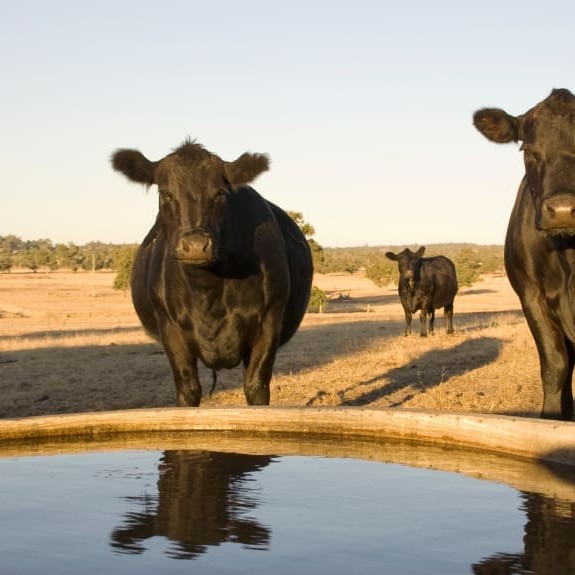 With extremely dry conditions gripping large parts of southern Australia, warnings are being issued to livestock producers over risks associated with grain feeding as a form of supplementation.
With extremely dry conditions gripping large parts of southern Australia, warnings are being issued to livestock producers over risks associated with grain feeding as a form of supplementation.
The Riverina Livestock Health and Pest Authority has offered some advice to assist in preventing acidosis, or grain poisoning, with the key message being that prevention is better than treatment.
“With hot temperatures and dry conditions, no decent rain for over 12 months and little prospect of rain for the coming weeks, many southern Australian producers are thinking about, or are already feeding their stock grain or pellets based on grain,” said LHPA’s Riverina district veterinarian, Colin Peake.
“This can be a good option, however producers have to remember that stock not used to grain feed can suffer from grain poisoning if they are not fed correctly,” he said.
Grain poisoning can make stock sick and can quickly kill if the stock overload on it.
Dr Peake advises that it is best to slowly introduce grain to stock, starting with small amounts, preferably mixed in with hay or roughage.
“Over the next two to three weeks the amount of hay should be decreased and the grain content in the ration increased so that stock have time to adapt to the high carbohydrate levels in the ration,” he said.
Stock should be closely monitored for signs of diarrhoea/scours, bloated abdomen, depression, lack of appetite, painful abdomen and sore feet/lameness, all signs of grain poisoning.
If these signs are noticed managers need to stop or reduce the grain, feed hay and treat the affected animals, Dr Peake said.
“Even when changing the grain in the ration, this should be done gradually. Different grains have different fibre and carbohydrate levels – for example oats and lupins are safer with higher fibre content and lower starch levels than barley or wheat.
“On the other hand, cracking grain increases the exposure of carbohydrates, therefore increasing the rate of digestion and consequently increasing the risk of grain poisoning.”
Any factors that can cause variation in intake of grain or availability of carbohydrate, such as unpalatable additive or cold inclement weather may also lead to grain poisoning.
- The LHPA suggests seeking advice on livestock nutrition during dry conditions via the local veterinarian or the LHPA district vet.
